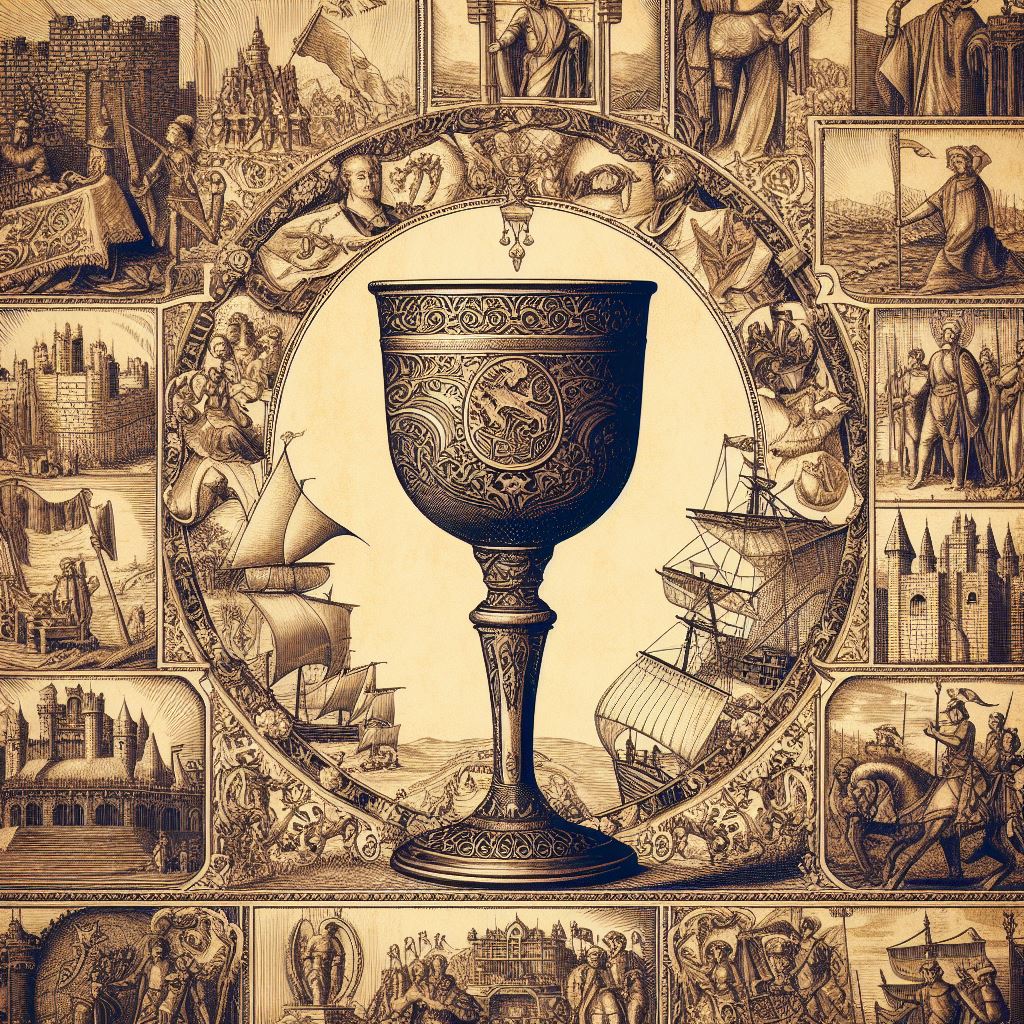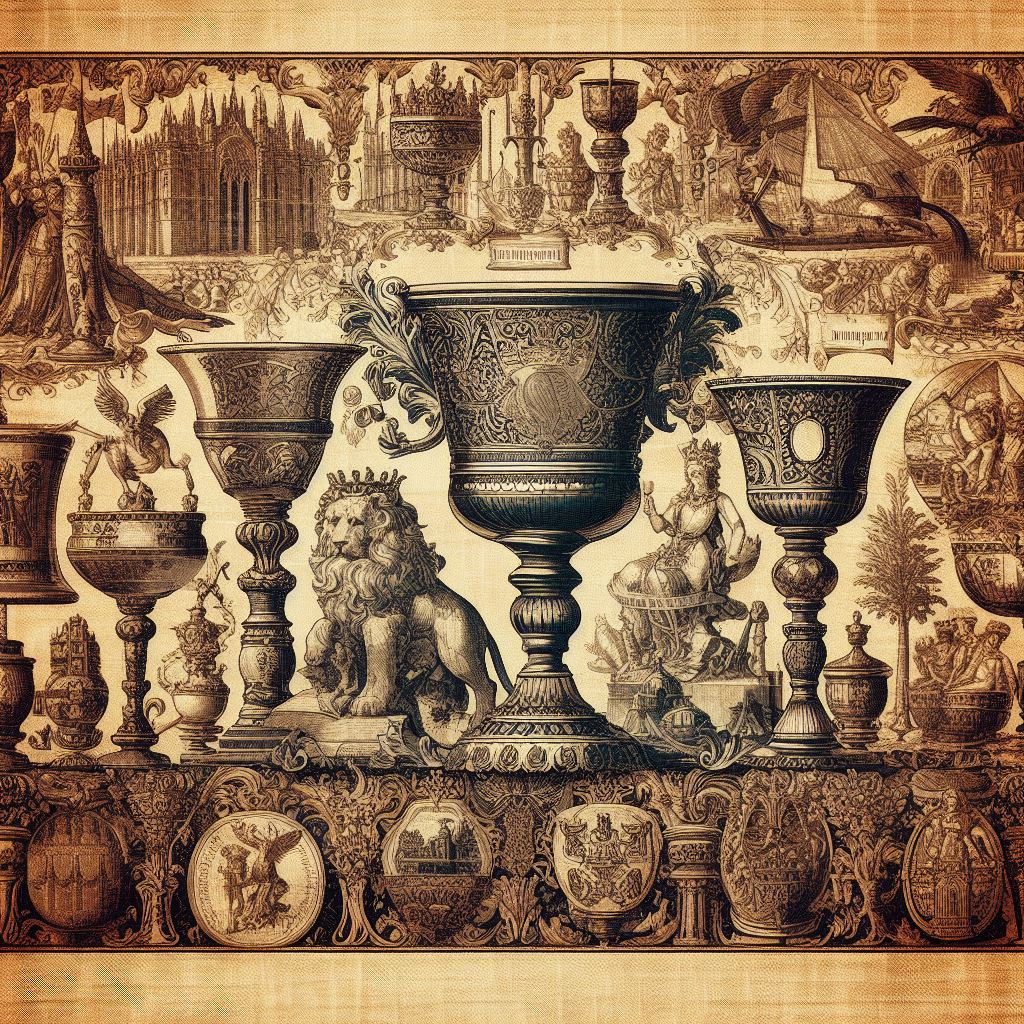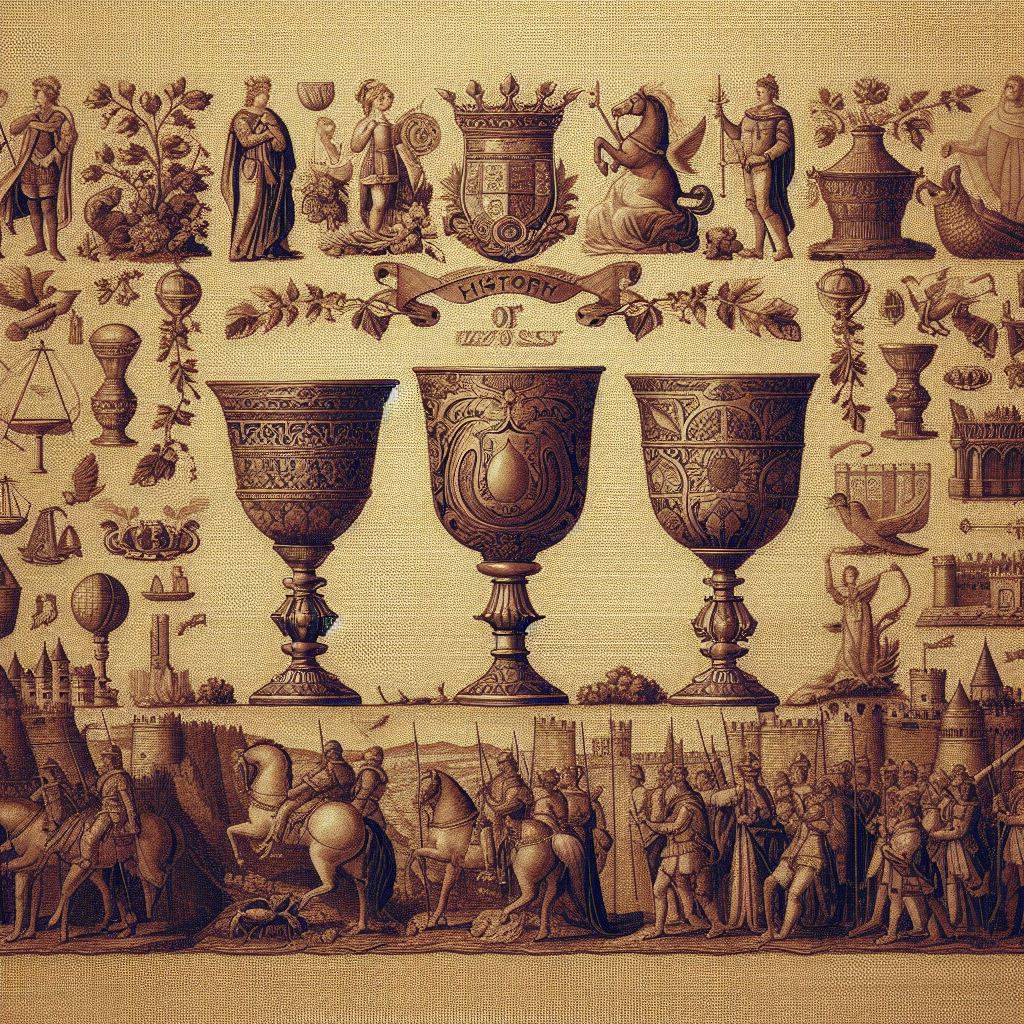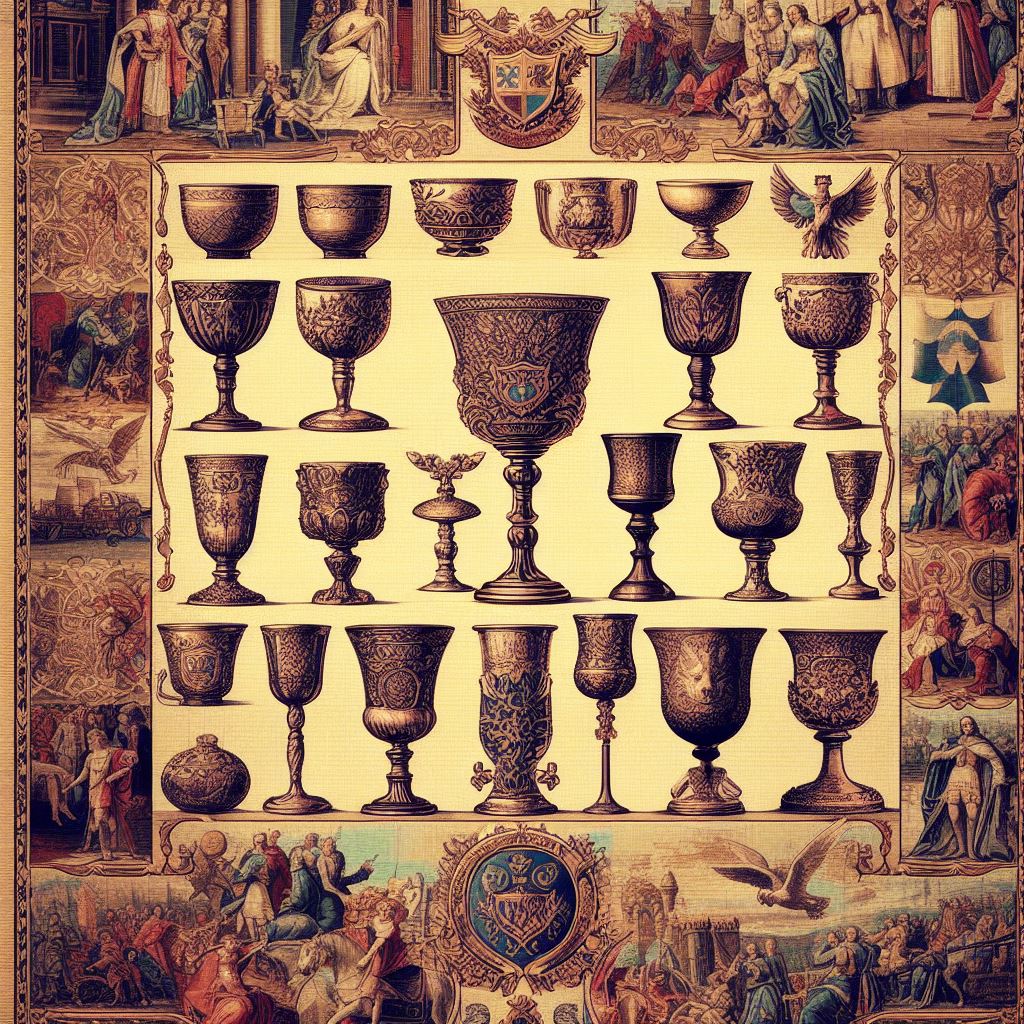As we sip from the goblets of history, each drop tells a story—a story of kingdoms that rose and fell, ceremonies that marked pivotal moments, and relics of times long gone. The goblets that have graced the tables of history aren’t merely vessels. They are, in essence, chapters in the world’s annals, bearing testament to the past.
Each goblet in this feature is unique for its historical significance and the tales it narrates. They fall into five main categories: Unique/Historical Goblets, Antique Goblets, Royal Goblets, Ceremonial Goblets, and Museum Goblets. Allow us to guide you through these categories, diving deep into the fascinating stories they hold.
Unique/Historical Goblets
The Unique/Historical Goblets are those that stand out for their remarkable histories or exceptional features. They may be tied to significant historical events or unique cultural practices.
The Holy Grail: A Religious and Cultural Phenomenon
For instance, the Holy Grail, often depicted as a goblet, is arguably one of the most famous in history. Said to be made of gold, standing about half a foot high, this goblet is believed to have been the vessel from which Jesus Christ drank during the Last Supper. It’s also associated with the Crucifixion, where it is said to have been used to collect Christ’s blood. Although its actual existence is disputed, the allure of this goblet has drawn countless seekers, inspiring a rich tapestry of legends and tales. The quest for the Holy Grail became a major theme in Arthurian literature, tying it to significant historical and cultural narratives.
The Warren Cup: Reflection of Roman Society
Another impressive historical goblet is the Warren Cup, a silver drinking cup from the Roman era, weighing about a pound, and standing around 4 inches tall. Its explicit homoerotic scenes make it a unique and valuable source for understanding Roman attitudes towards sexuality. It shows that even inanimate objects like goblets can hold reflections of the past’s social climate, acting as tangible windows into societal norms and values of the time.
Antique Goblets
Antique Goblets whisper tales of bygone eras, their patina telling stories of the many hands they’ve passed through. Treasured by collectors and history buffs alike, they serve as tangible links to our past. The value of these goblets lies in their age, craftsmanship, and the historical narratives they carry.

The Greek Kylix: Glimpses of Ancient Greek Life
Consider the ancient Greek kylix, a type of wine-drinking goblet, often decorated with scenes from Greek mythology and daily life. Made from clay, these shallow, stemmed cups are typically 5 to 6 inches in diameter. Studying the imagery on these goblets, which often portray popular myths and public gatherings, gives us insights into the society and customs of ancient Greece.
The Mazer: Craftsmanship of the Middle Ages
Similarly, the mazer—a type of wooden drinking goblet used in Medieval Europe—exemplifies the craftsmanship of its era. These goblets, often made from maple wood and adorned with silver or gold, have survived centuries to remind us of life in the Middle Ages. Some of them measure up to 8 inches in diameter, reflecting the grandeur and scale of medieval feasting.
Royal Goblets
Representing the height of luxury and opulence, Royal Goblets have long served royalty across cultures. Made from precious materials and often intricately designed, they symbolize power and wealth and narrate stories of kingdoms and dynasties.

The Luck of Edenhall: A Goblet of Legend and Power
The Luck of Edenhall, a stunning glass beaker now kept in the Victoria and Albert Museum, is believed to have been a royal goblet. This beautiful vessel, made of Syrian or Egyptian glass, measures about 6 inches in height and is decorated with foliate and geometric motifs. Medieval legends associated it with mystical powers and tied it to the fate of the Eden family of England. Its survival, despite its delicate glass material, is testament to the high value placed on it and the meticulous care taken to preserve it.
The Aldobrandini Tazze: Goblets of Intrigue and Artistry
The Aldobrandini Tazze, now housed in various museums across the world, are a remarkable example of royal goblets. These 12 silver standing cups, each about 10 inches high, are known for their intricate design and narrative reliefs depicting scenes from the Twelve Caesars’ lives. These goblets’ journey through the hands of different collectors, including the Aldobrandini family of Rome, forms a fascinating historical narrative. They not only represent the opulence of royal households but also the intrigue and allure attached to such artifacts, making them highly valued by collectors.
Ceremonial Goblets
Ceremonial Goblets hold special cultural or religious significance, used in rituals and ceremonies that marked important events or transitions. They often bear specific designs or symbols that reflect their intended purpose.

The Jewish Kiddush Cup: Ritual in a Goblet
The Jewish Kiddush cup, used during Shabbat and other Jewish holidays, is an excellent example of a ceremonial goblet. Made usually from silver, it’s about 6 inches tall, and each design element—its material, size, and even the number of cups used—carries a particular religious significance. Its usage spans thousands of years, tying it to the very roots of Jewish cultural and religious practices.
The Communion Chalice: Symbol of Christian Faith
Likewise, the chalice used in Christian Communion services is another ceremonial goblet. Symbolizing the Last Supper of Jesus Christ, it’s a central element in one of Christianity’s most sacred rituals. Made typically of gold or silver, and holding about 20 ounces of wine, this goblet links directly to the narrative of Christ’s life, death, and resurrection.
Museum Goblets
Lastly, Museum Goblets are those famous for their historical significance or associations with notable figures or events. Often displayed behind glass in museums, they offer valuable insights into past societies, lifestyles, and artistic sensibilities. The conservation of these goblets requires meticulous care, given their age, fragility, and historical importance.
The Tassilo Chalice: A Blend of History and Artistry
The Tassilo Chalice, preserved in the Abbey of Kremsmünster in Austria, is a prominent example. This elaborate goblet, standing about 9 inches high and crafted from copper alloy and silver, is a celebrated masterpiece of the early Middle Ages. The chalice’s inscriptions connect it to Duke Tassilo III of Bavaria and his wife Liutberga, adding historical significance. The Tassilo Chalice is a testament to the artistic prowess of its time and the crucial role these objects played in religious ceremonies. It’s been meticulously preserved, underlining the importance attached to historical artifacts.
In conclusion, the echoes of history resonate within these goblets, their narratives as varied and rich as the cultures they hail from. Through them, we drink deeply from the well of our shared past, relishing the flavors of history in every sip. These goblets carry the weight of time, embodying the aesthetics, values, and histories of their eras. They stand as silent witnesses to the unfolding saga of human civilization, narrating tales of power, faith, culture, and artistry. To explore further into the intriguing world of goblets across different dimensions like material, design, and form, visit The Goblet Compendium, a comprehensive guide on this captivating subject.
